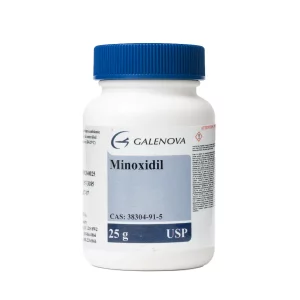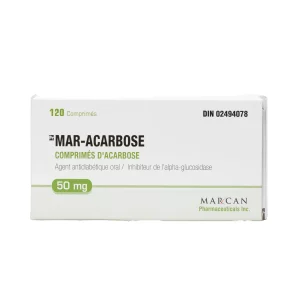Your cart is empty.
Your cart is empty.
When it comes to managing weight, two prescription medications often discussed are Contrave vs. Ozempic, Contrave vs. Wegovy, and Contrave vs. Semaglutide. Both are approved by the FDA and are designed to support weight management, but they work in very different ways. In this article, we’ll compare how each helps control appetite, who might benefit from them, and how they support weight loss efforts.
It’s important to remember that neither medication should be started without personalized guidance from a qualified health expert. This article provides general information to help you understand these options better, but any treatment must be tailored and approved by a professional.
Contrave is a prescription tablet combining two active ingredients: bupropion and naltrexone. Bupropion is commonly known for its use in mood support and motivation, while naltrexone helps reduce cravings. Together, they work on brain areas involved in hunger signals and the reward system, helping to decrease the urge to eat for emotional reasons or habit. This medication is usually taken once daily as a tablet. It’s intended to be used alongside healthy lifestyle choices such as balanced nutrition and regular exercise. Consistency in these habits supports the medication’s effectiveness.
The way Contrave works is by influencing neurotransmitters in the central nervous system. Bupropion affects dopamine and norepinephrine, which can help reduce impulsive eating and improve mood. Naltrexone works to lessen the pleasure derived from eating certain foods, especially those high in sugar and fat. This combination aims to help people better manage cravings and stick to healthier eating patterns. Contrave is typically prescribed for adults with a body mass index (BMI) of 30 or higher. It may also be used in those with a BMI of 27 or higher if they have other weight-related health issues such as high blood pressure or type 2 diabetes. However, it is critical to consult a healthcare provider to confirm whether this medication is a suitable choice for you.

Ozempic is an injectable medication that contains semaglutide. Semaglutide acts like a natural hormone in the body called glucagon-like peptide-1 (GLP-1), which helps regulate hunger and feelings of fullness.
This medication slows the rate at which food leaves the stomach, helping you feel full for longer periods. By doing so, it reduces appetite and lowers overall calorie intake. Ozempic is given as a once-weekly injection, which some people find convenient compared to daily medications. Ozempic was originally approved to manage blood sugar levels in adults with type 2 diabetes. Over time, research showed it also supports weight loss, leading to its wider use for weight management purposes.
People who might be prescribed Ozempic generally have a BMI of 30 or higher, or 27 or higher with associated weight-related health conditions. Starting this medication usually involves beginning with a low dose, which is gradually increased to minimize any digestive discomfort while the body adjusts. Because Ozempic is an injectable medication, it’s essential to get proper training on how to self-administer the shots safely. Always seek guidance from a qualified professional before starting treatment.
Both Contrave and Ozempic aim to help reduce calorie intake by managing appetite, but they achieve this through different biological pathways.
Contrave targets brain pathways that influence cravings and the reward felt from eating. By modifying the release and uptake of certain neurotransmitters, it can reduce emotional and habitual eating, helping individuals resist urges to snack or overeat.
Ozempic works through a hormone-based mechanism. By mimicking GLP-1, it slows digestion and signals the brain’s appetite centers to increase feelings of fullness. This means you may feel satisfied with smaller portions and experience less hunger throughout the day.
Both medications support weight loss by helping people eat less, but the routes they take are quite different. Contrave mainly alters brain chemistry related to reward, while Ozempic affects gut hormones and digestion. Whichever option is considered, it must be part of a structured plan that includes dietary changes and physical activity. Always confirm your suitability for either medication with a licensed professional before beginning treatment.
Clinical trial data gives insight into the typical weight loss results you might expect with each medication.
With Ozempic, studies show an average weight loss of about 10-15% of body weight after roughly one year of treatment. Many participants see noticeable reductions within the first few months, which is why Ozempic is often associated with relatively rapid weight loss. Contrave users tend to experience a slower, more gradual reduction in weight, often around 5-10% after a year. This steady pace can be beneficial for those looking for behavioral support over time, helping reinforce healthier eating habits.
Lifestyle factors like diet quality, physical activity, and consistency greatly influence results for both medications. Neither is a standalone solution, and their effectiveness improves when combined with a balanced, sustainable routine. Before starting any weight loss medication, make sure you have expert advice to develop a personalized approach that fits your health status and goals.
Choosing between Contrave and Ozempic depends on your individual needs, preferences, and how you want to manage your appetite.
Contrave may be a better option if you struggle primarily with cravings or emotional eating. Its daily oral dosing can fit well into routines where tablets are preferred over injections. For people who benefit from mood support and crave reduction, Contrave offers a unique dual approach. Shop Contrave at Elivena for authentic products and fast delivery. Ozempic is often favored by those who want to suppress appetite more directly and see quicker weight loss results. Its weekly injection schedule can be more convenient for some and may provide a stronger signal for fullness, reducing portion sizes.
Your comfort level with taking injections or pills, as well as your medical history and personal goals, should guide the choice. Both medications require a commitment to lifestyle changes and ongoing evaluation by a qualified provider. Never start or switch medications without discussing your options thoroughly with an expert who can tailor the plan to your specific circumstances.

Both Contrave and Ozempic are effective FDA-approved medications for supporting weight management through appetite control. Their different mechanisms provide options suited to varying needs and preferences.
Contrave acts mainly on brain pathways linked to cravings and emotional eating. It’s an oral medication best suited for those who want daily dosing and benefit from managing food-related urges on a behavioral level.
Ozempic influences gut hormones to slow digestion and enhance feelings of fullness. Its weekly injection schedule may be ideal for people seeking faster appetite suppression and weight loss results. Neither medication replaces the need for healthy lifestyle habits. Success depends on consistent nutrition, physical activity, and a long-term commitment to wellness.
Every person’s experience will vary, so working with a qualified healthcare professional to determine which medication fits your health profile is crucial. They will consider your medical history, preferences, and goals to create a safe and effective plan. Always consult an expert before starting, switching, or stopping any weight management medication. Proper guidance ensures that your journey to better health is both safe and sustainable.
Contrave is a tablet targeting brain reward centers to reduce cravings, while Ozempic is an injectable that mimics a natural hormone affecting hunger and fullness.
Ozempic typically results in faster weight loss, especially in the early stages. Contrave may take longer but helps with long-term craving control.
Switching is possible but should only be done under medical supervision to ensure safety and effectiveness.
Yes, but through different mechanisms. Contrave reduces cravings, while Ozempic increases feelings of fullness and slows digestion.
Contrave is often recommended for people who struggle with habitual or emotional eating.
Absolutely. Both medications are most effective when paired with balanced nutrition, regular exercise, and consistent habits.
Davies, M. J., Bergenstal, R., Bode, B., Kushner, R. F., Lewin, A., Skjøth, T. V., … & Zinman, B. (2015). Efficacy of liraglutide for weight loss among patients with type 2 diabetes: the SCALE diabetes randomized clinical trial. JAMA, 314(7), 687-699. https://doi.org/10.1001/jama.2015.9676
Greenway, F. L., Fujioka, K., Plodkowski, R. A., Mudaliar, S., Guttadauria, M., Erickson, J., … & O’Neil, P. M. (2010). Effect of naltrexone plus bupropion on weight loss in overweight and obese adults (COR-I): a multicentre, randomised, double-blind, placebo-controlled, phase 3 trial. The Lancet, 376(9741), 595-605.
https://pubmed.ncbi.nlm.nih.gov/20673995/
Wilding, J. P. H., Batterham, R. L., Calanna, S., Davies, M., Van Gaal, L. F., Lingvay, I., … & le Roux, C. W. (2021). Once-Weekly Semaglutide in Adults with Overweight or Obesity. New England Journal of Medicine, 384(11), 989-1002.
https://doi.org/10.1056/NEJMoa2032183
Yanovski, S. Z., & Yanovski, J. A. (2014). Long-term drug treatment for obesity: a systematic and clinical review. JAMA, 311(1), 74-86.





Unlock savings on bundles and elevate your online experience today!